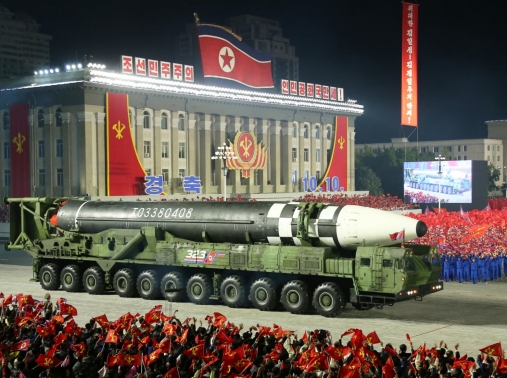|
|
RAND research and commentary on the issues that matter most
|
Apr 15, 2021
|
|
|
|
|
Photo by NiseriN/Getty Images
|
|
|
|
|
Demographic trends in fertility, mortality, and migration are responsible for shifts in the structure of any population. The pandemic is affecting all these areas, disrupting the very makeup of American society, say RAND researchers.
- Preliminary data suggests that the fertility rate could decrease even further. Lower birth rates translate into fewer people entering the labor force 20 years later, which affects the economy. And with fewer new parents in the future, that cycle may continue.
- COVID-19 could exacerbate a pre-pandemic uptick in mortality. What's more, the distribution of COVID-19 deaths has not been uniform across race and ethnicity. Disproportionate death rates could change the very face of the population, placing greater burden on specific communities and groups.
- COVID-19 has already affected migration. Many migrants returned to their home countries at the start of the pandemic to avoid closing borders. This has continued as many migrants lose their jobs and face higher risks of infection. The United States is likely losing migrants who are key to certain industries.
It's difficult to know how this combination of trends will play out. But more time and more data will provide a clearer picture of whether these disruptions are short-lived—or whether they change the demography of the nation and the world for the foreseeable future. Read more »
|
 |
|
Nurse Nicole McCurrach draws up COVID-19 vaccinations at Richmond Raceway in Richmond, Virginia, March 4, 2021. Photo by Julia Rendleman/Reuters
|
|
As vaccine eligibility continues to expand, recent modeling by RAND researchers shows just how important it is for Americans who have many daily contacts to get vaccinated. Vaccinating just 15 percent of the U.S. population would be enough to crush the epidemic—so long as that 15 percent is made up of people who have the most contacts. To help target vaccinations, health officials could work directly with places where people have high numbers of contacts, such as churches and factories. Read more »
|
|
 |
|
Houthi fighters during a gathering of Houthi loyalists on the outskirts of Sanaa, Yemen, July 8, 2020. Photo by Khaled Abdullah/Reuters
|
|
The Iran Threat Network is a formidable force of tens of thousands of fighters across the Middle East and South Asia. A new RAND report concludes that this network is Iran's primary means of power projection. And groups that make up the network—not Tehran—are most likely to launch attacks against U.S. and other targets. The authors recommend that Washington formulates specific responses to these groups. Read more »
|
|
 |
|
Employees assemble ventilator components at a GE Healthcare manufacturing facility in Madison, Wisconsin, April 21, 2020. Photo by Daniel Acker/Reuters
|
|
As the first wave of COVID-19 began to tear through the United States last year, some hospitals saw the need for ventilators increase by 500 to 700 percent. This highlighted an early lesson of the pandemic: America is not prepared for major shocks to its supply chains. This vulnerability constitutes a national security threat, says RAND's Bradley Martin. To respond effectively, officials need to gain a deeper understanding of what supply chains actually look like and how they affect one another. Read more »
|
|
 |
|
Photo by metamorworks/Getty Images
|
|
By relying heavily on information gathered by classified satellites and its intelligence-collection programs, the U.S. intelligence community has “willfully blinded itself” to a trove of public information available online. That's according to RAND's Cortney Weinbaum. The need to monitor such open-source information is urgent, she says. This could help the government uncover foreign adversaries' plans to harm the United States, identify sources of domestic radicalization, and potentially save lives. Read more »
|
|
 |
|
North Korea displays what appears to be its largest intercontinental ballistic missile during a parade to mark the 75th anniversary of the founding of its ruling Workers' Party, October 10, 2020. Photo by KCNA
|
|
North Korea's nuclear weapons are an existential threat to South Korea and a potentially serious threat to the United States. Attempts to address this threat by negotiating with North Korea will likely continue to fail, say the authors of a new RAND paper. Instead, Washington and Seoul could focus on convincing Pyongyang that any nuclear weapon use would be disastrous for the Kim regime. If North Korea believes its weapons are a liability rather than an asset, then it may consider some degree of denuclearization. Read more »
|
|
|
You already get the latest insights from RAND in your inbox. Why not your earbuds? Policy Currents is available as a weekly podcast. New episodes every Friday.
Subscribe now »
|
|
|
|
|